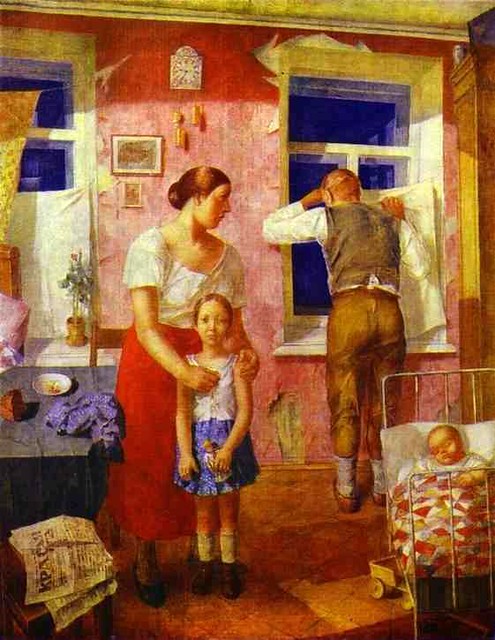
Kuzma Petrov-Vodkin was born in Khvalynsk into the family of a local shoemaker. His first exposure to art was in his early childhood, when he took some lessons from icon painters and a signmaker. He took a summer job at a small shipyard with plans to get into railroad college in Samara. After failing his exam, he turned to "Art Classes of Fedor Burov" in 1893. By chance, his mother's employer invited a well-known architect, R. Meltzer. Petrov-Vodkin was introduced to the guest and impressed him enough to get an invitation to study art at Saint Petersburg. He also met at this time Borisov-Musatov, an important painter resident in Saratov, who encouraged Petrov-Vodkin to continue his studies. He stayed in Saint Petersburg from 1895 to 1897 studying at the Baron Stieglits School, before moving to the Moscow School of Painting, Sculpture and Architecture. There Petrov-Vodkin was a student of Valentin Serov, Isaak Levitan and especially Konstantin Korovin.
Even during his college years, he managed to enter into conflict with the Russian Orthodox Church, which discarded his work on a chapel in Samara. A number of his early works were deemed too erotic. His first well-known work was The Dream (1910), which sparked a discussion among contemporary Russian artists. Other major works of that time include Boys at play, and, notably, Bathing of a Red Horse, his most iconic work. The latter became an instant classic. During this stage he extensively used an aesthetic of Orthodox icon together with brighter colors and unusual compositions.































